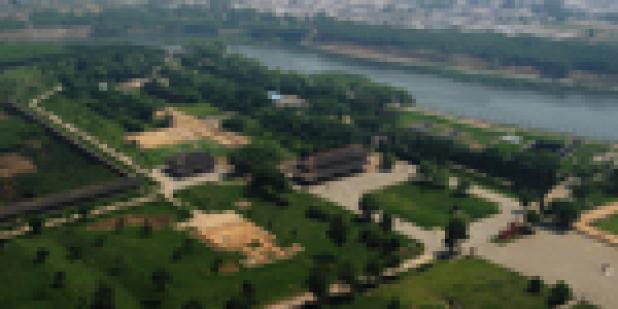Join us for a free one-day workshop for educators at the Japanese American National Museum, hosted by the USC U.S.-China Institute and the National Consortium for Teaching about Asia. This workshop will include a guided tour of the beloved exhibition Common Ground: The Heart of Community, slated to close permanently in January 2025. Following the tour, learn strategies for engaging students in the primary source artifacts, images, and documents found in JANM’s vast collection and discover classroom-ready resources to support teaching and learning about the Japanese American experience.
Anyang Archaeology in the 21st Century: New Perspectives in the Search for the Shang Civilization
TANG JIGEN (Chinese Academy of Social Sciences) presents the twenty-third Sammy Yukuan Lee Lecture in Chinese Archaeology and Art
Where

Shang (ca 1600 BC-1046 BC) is the earliest state to have left written records in Chinese history. Anyang, located some 500 kilometers south of Beijing, is known to be the site of the last capital of Shang China. Since 1928, archaeologists have devoted great efforts to the study of Shang by excavating its buried remains. In the first ten years of the twenty-first century, archaeological work in Anyang--by adopting new fieldwork strategies and research methods--has greatly increased our understanding of this once-mysterious state.
This lecture discusses the latest archaeological knowledge of the Shang. It focuses on Anyang's residential layout and social organization. It also explores the association between the loss of cultural diversity and the collapse of Shang state.
UNESCO has declared the site of the Shang capital to be a cultural heritage site. That site, covering approximately 30 square kilometers, is located in and around what is today the village of Xiaotun, west of Anyang, in Henan province. This cite is commonly called Yinxu (literally, "the ruins of Yinz" by historians and archaeologists.
The World Heritage website of UNESCO describes the Shang capital in these words:
A number of royal tombs and palaces, prototypes of later Chinese architecture, have been unearthed on the site, including the Palace and Royal Ancestral Shrines Area, with more than 80 house foundations, and the only tomb of a member of the royal family of the Shang dynasty to have remained intact, the Tomb of Fu Hao. The large number and superb craftsmanship of the burial accessories found there bear testimony to the advanced level of Shang crafts industry. Inscriptions on oracle bones found in Yinxu bear invaluable testimony to the development of one of the world's oldest writing systems, ancient beliefs and social systems.
Directions:
Enter UCLA from Sunset Blvd. at Westwood Plaza. Drive straight ahead into Parking Structure 4. Take the elevator at the southeast end of Parking Structure 4 or the stairs at the northeast end, closest to the museum. Parking is $10.
Featured Articles
Please join us for the Grad Mixer! Hosted by USC Annenberg Office of International Affairs, Enjoy food, drink and conversation with fellow students across USC Annenberg. Graduate students from any field are welcome to join, so it is a great opportunity to meet fellow students with IR/foreign policy-related research topics and interests.
RSVP link: https://forms.gle/1zer188RE9dCS6Ho6
Events
Hosted by USC Annenberg Office of International Affairs, enjoy food, drink and conversation with fellow international students.
Join us for an in-person conversation on Thursday, November 7th at 4pm with author David M. Lampton as he discusses his new book, Living U.S.-China Relations: From Cold War to Cold War. The book examines the history of U.S.-China relations across eight U.S. presidential administrations.




